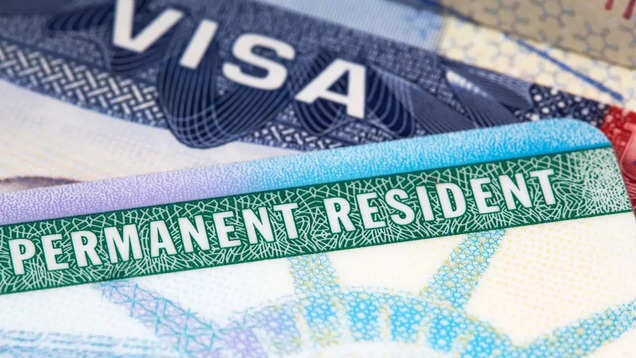Navigating the U.S. immigration process can be daunting, but breaking it down into clear, achievable steps can make it more manageable. Whether you’re reuniting with family, starting a new career, or seeking fresh opportunities, the path to immigration typically follows a similar framework. This guide outlines the key steps and what to expect along the way, guiding to help you move through each stage with confidence.
Overview of U.S. Immigration Law
U.S. immigration law is guided by key principles: reuniting families, welcoming immigrants with skills beneficial to the economy, offering humanitarian protection, and enhancing diversity. This document provides an overview of the structure and operation of the U.S. legal immigration system.
1. The Immigration and Nationality Act (INA)
The main law governing U.S. immigration policy, the Immigration and Nationality Act (INA), sets an annual limit of up to 675,000 permanent immigrant visas across various categories. Notably, there is no cap on the annual admission of certain immediate relatives (spouses, children under 21, and parents) of U.S. citizens. Each year, the president consults with Congress to set the maximum number of refugees admitted via the U.S. Refugee Admissions Program. Humanitarian protections, including asylum and Temporary Protected Status, allow individuals to live in the U.S. with no specific numerical limits but do have eligibility restrictions.
2. Lawful Permanent Residency and Path to Citizenship
After securing an immigrant visa or certain humanitarian protections (like asylum), individuals may apply for lawful permanent residency (LPR) status, also known as a green card. Those who reside in the U.S. as LPRs for five years (or three in some cases) are eligible to apply for U.S. citizenship, though there is no requirement to do so. LPRs can hold most jobs and live permanently in the U.S., subject to immigration laws.
3. Non-Immigrant Visas for Temporary Stays
Each year, the U.S. grants temporary (non-immigrant) visas for varied purposes, such as tourism, study, and employment. Certain employment-based non-immigrant visas are capped annually, while others, including tourist and student visas, have no numerical limits. Non-immigrant visas are typically granted for specific durations.
I. Family-Based Immigration
A core tenet of U.S. immigration is family unification. Family-based immigration enables U.S. citizens and LPRs to sponsor certain relatives for LPR status. Immediate relatives of U.S. citizens receive visas without annual limits, provided they meet standard eligibility requirements. These immediate relatives include:
- Spouses of U.S. citizens
- Unmarried minor children of U.S. citizens (under 21)
- Parents of U.S. citizens (the petitioner must be at least 21)
Other family members fall under the family preference system, which allocates a limited number of visas annually to relatives, including adult children and siblings of U.S. citizens, and the spouses and children of LPRs. This allocation system is detailed in Table 1.
II. Employment-Based Immigration
The U.S. offers ways for skilled individuals to immigrate temporarily or permanently based on employment. Temporary work visas cover specific jobs and are limited to the petitioning employer, with over 20 visa types, such as L-1 (intracompany transfers) and H-1B (skilled workers). For permanent employment, an annual cap of 140,000 visas is divided among five preference categories, shown in Table 2. Employers typically sponsor workers through a multi-step process, often requiring labor market certification.
III. Per-Country Immigration Limits
The INA limits immigration from any single country to no more than 7% of all immigrants (family and employment-based combined) each year, designed to prevent dominance by any one national group. This limit does not guarantee specific quotas by nationality.
IV. Refugees and Asylees
Refugees, unable to return to their home countries due to persecution fears, apply for U.S. admission from abroad. The president and Congress set the refugee ceiling annually, broken down by global regions. In recent years, ceilings have varied, with the current limit set at 125,000 for FY 2024. Asylum, for individuals already in the U.S. or at a port of entry, has no cap. After one year, refugees and asylees can apply for LPR status.
V. The Diversity Visa Program
The Diversity Visa Program, created in 1990, provides 50,000 annual visas to immigrants from countries with low U.S. immigration rates. Applicants must meet educational or work requirements, and selected applicants are chosen through a lottery system.
VI. Additional Humanitarian Protections Allowing Individuals to Temporarily Enter or Stay in the United States Without a Visa
Temporary Protected Status (TPS) offers protection to individuals already in the United States who are unable to return to their home country due to “natural disaster,” “extraordinary temporary conditions,” or “ongoing armed conflict” in specific designated regions or countries. TPS is granted for periods of six, twelve, or eighteen months and may be extended if the unsafe conditions persist, provided that the individuals meet entry and residency criteria specific to the TPS designation. TPS does not automatically lead to lawful permanent residency (LPR) or grant any other immigration status.
Deferred Enforced Departure (DED) provides deportation protection for individuals from countries deemed too unstable or dangerous to return to. Unlike TPS, which is established by statute, DED is an executive branch discretion. DED does not necessarily lead to LPR status or confer any other immigration status.
Deferred Action for Childhood Arrivals (DACA), created in 2012, allows certain individuals brought to the U.S. under the age of 16 and residing continuously since June 15, 2007, to remain and work legally for at least two years if they have a clean criminal record and have completed high school or an equivalent degree. DACA does not offer a path to permanent legal status and requires renewal every two years. While DACA has faced multiple federal court challenges, the program remains active as of this publication.
Humanitarian parole, an executive power, allows certain individuals to enter the U.S. temporarily for urgent humanitarian or significant public reasons, even if they don’t qualify as refugees or for immigration through other channels. Since its inception in 1952, humanitarian parole has been used by presidents of both major parties. From 2020 to 2024, the Biden administration implemented several sponsorship-based parole programs, such as the Uniting for Ukraine program and a program allowing temporary residence for Cubans, Haitians, Nicaraguans, and Venezuelans.
Parolees are not automatically placed on a path to permanent residency. Those wishing to stay long-term must apply for a different immigration status. Parole recipients may generally seek work authorization for the duration of their parole.
VII. U.S. Citizenship
Eligibility for U.S. citizenship through naturalization generally requires an individual to have held LPR status (a green card) for at least five years (or three years if they gained LPR through marriage to a U.S. citizen or through the Violence Against Women Act, VAWA). Certain exceptions exist, including for U.S. military members who serve during wartime or declared hostilities. Applicants for citizenship must be at least 18, demonstrate continuous residency, maintain “good moral character,” pass English, history, and civics exams (with certain exceptions), and pay an application fee, among other criteria.
The U.S. immigration system encompasses a multifaceted framework, balancing various visa categories, humanitarian protections, pathways to permanent residency and citizenship, as well as temporary options for individuals facing unique crises in their countries of origin.



